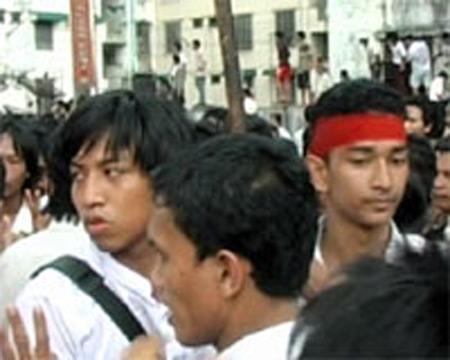It wasn’t long after Sony launched its so-called PortaPak, the first portable video recording device for the consumer market, in 1965, before a whole new type of media activists sprang up in the US. The actions of political groups, including the Videofreex, Video Free America, Paper Tiger Television, Global Village, Top Value Television and, prominently, the Raindance Corporation, helped create alternatives to the commercial media companies that had been enjoying monopoly-like status. The phenomenon of guerrilla television triggered an out-and-out media revolution. As video camcorders kept getting cheaper and better over the years, alternative footage also began to penetrate to the established media.
The phenomenon of guerrilla television triggered an out-and-out media revolution. As video camcorders kept getting cheaper and better over the years, alternative footage also began to penetrate to the established media.
One of many small breakthroughs in that direction came in 1988, when the video artist Paul Garrin used his Hi8 camera to document police officers with covered badge numbers harassing and beating homeless people living in New York’s Tompkins Square Park, right outside Garrin’s windows. The harassment, it turned out, was a step in a larger plan to stimulate real-estate prices in the hip East Village neighbourhood. Circulating on network news shows, Garrin’s footage not only shined a light on the background for the events but also contributed to charges being brought against the officers involved.
While Garrin’s effort mainly caused a stir in the US, a similar event a few years later, in spring 1991, drew the world’s attention. George Holliday was a plumber who by coincidence aimed his camcorder on a group of Los Angeles police officers beating up an African American man, Rodney King. Holliday submitted his tape to the local TV station, KTLA, and within days no one would ever again doubt that documentary video recordings originating outside the media circuit could change the world.
"Burma VJ". Framegrab
THE DOVE FROM CHECHNYA
Naturally, video activism has also played a part outside the US. In the years around the break-up of the Soviet Union, countless video reporters were thorns in the eye of the crumbling empire, as they brought the totalitarian state’s secrets to light and documented dramatic events in the transitional phase following the fall of the Berlin Wall in autumn 1989.
This would be a good time to mention Juris Podnieks, a Latvian filmmaker who time and again risked his life to document the revolts leading to Latvia’s independence in 1991. The project culminated in tragedy when two cameramen were killed during the occupation of the TV station in Riga, an event described in the film "End of Empire" (1991). “Film me, film me!” Andris Slapins called out to a colleague, as he collapsed – demonstrating even, in this ultimate moment, his commitment to documenting for posterity the Soviet oppression of his people.
Other cases abound. Notable among them is the secret group of Chechen women who for years have struggled at considerable risk to video-document the high toll that Russia’s “dirty war” is taking on Chechen civilians. Heading the initiative is Zainap Gashaeva, known as Coca (“The Dove”). Born in exile, in Kazakhstan, this self-employed woman and mother of four continually gathers video footage, which is then smuggled to the West, to raise the international community’s awareness of the situation in Chechnya. Moreover, she hopes, the tapes will be useful in a possible legal aftermath.
NO EFFECT WITHOUT DISTRIBUTION
Since the mid-1990s, Gashaeva has been working with a human rights organisation, Echo of War. This is a typical pattern in recent video activism. The early pioneers often faced the problem that their footage, no matter how sensational, had limited effect unless they got access to distribution channels. Consequently, the years around 2000 saw the emergence of a number of international organisations that are primarily dedicated to organising and coordinating the activities of the usually independent video reporters, and making sure their footage is processed and distributed.
One high-profile organisation is Witness (http://www.witness.org/), which hands out camcorders to grassroots organisations around the world in order to prevent or document human rights abuses. Based in New York, Witness was established in 1992 by initiative of the Reebok Human Rights Foundation, in partnership with the musician and activist Peter Gabriel, largely as an effect of the Rodney King episode in Los Angeles the year before. In this respect as well, George Holliday’s documentation of police brutality made an impact far into the future.

